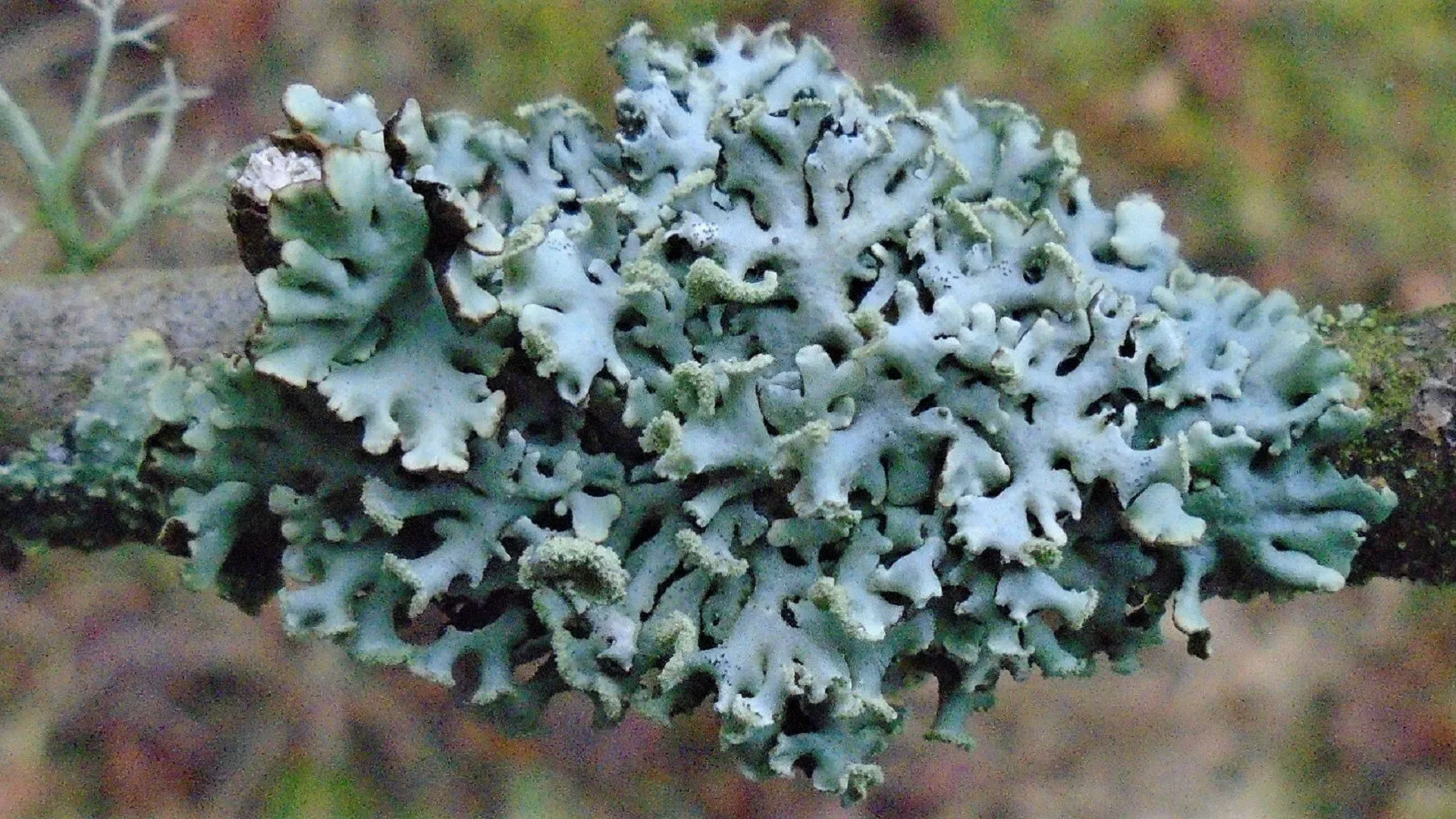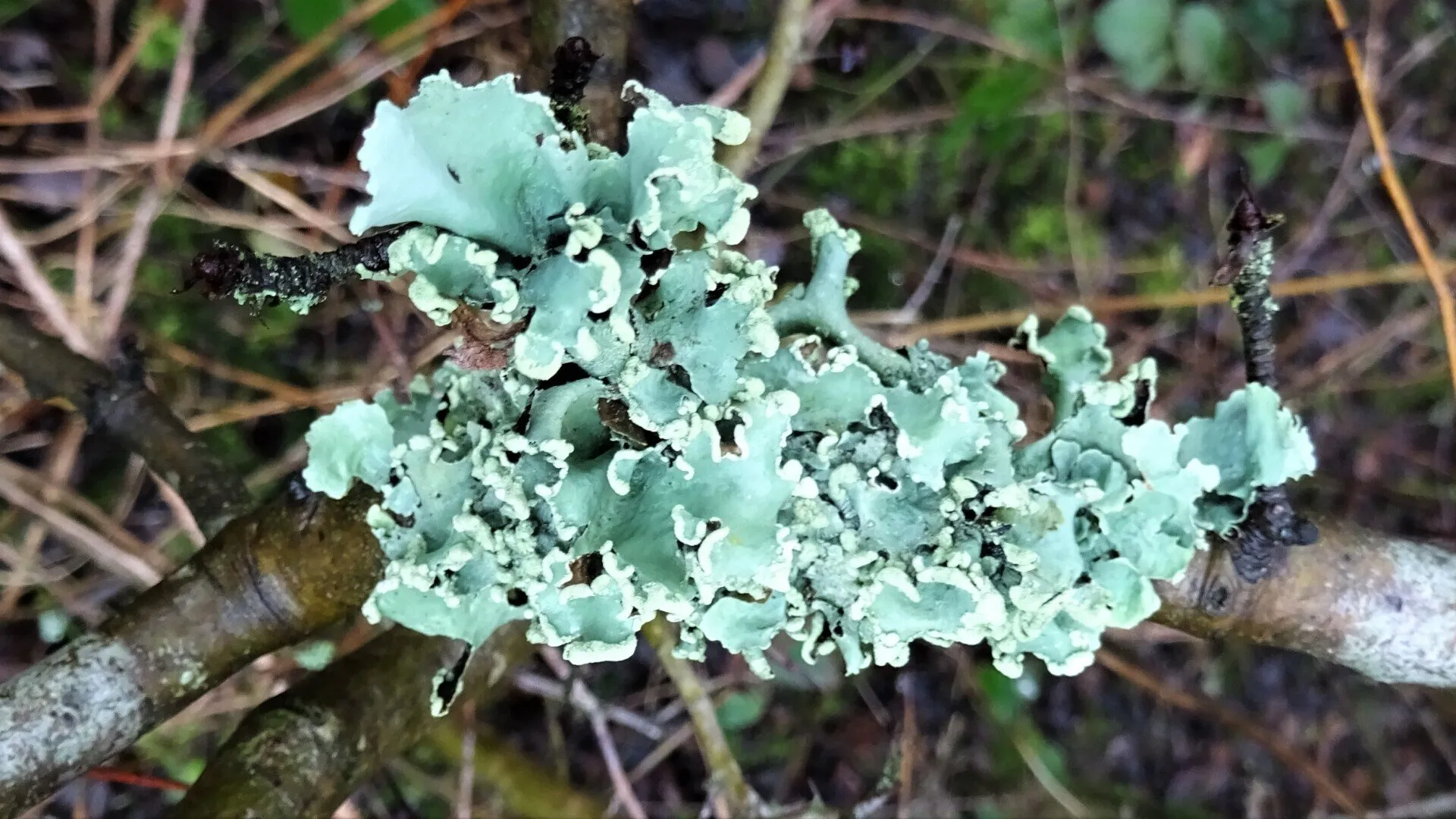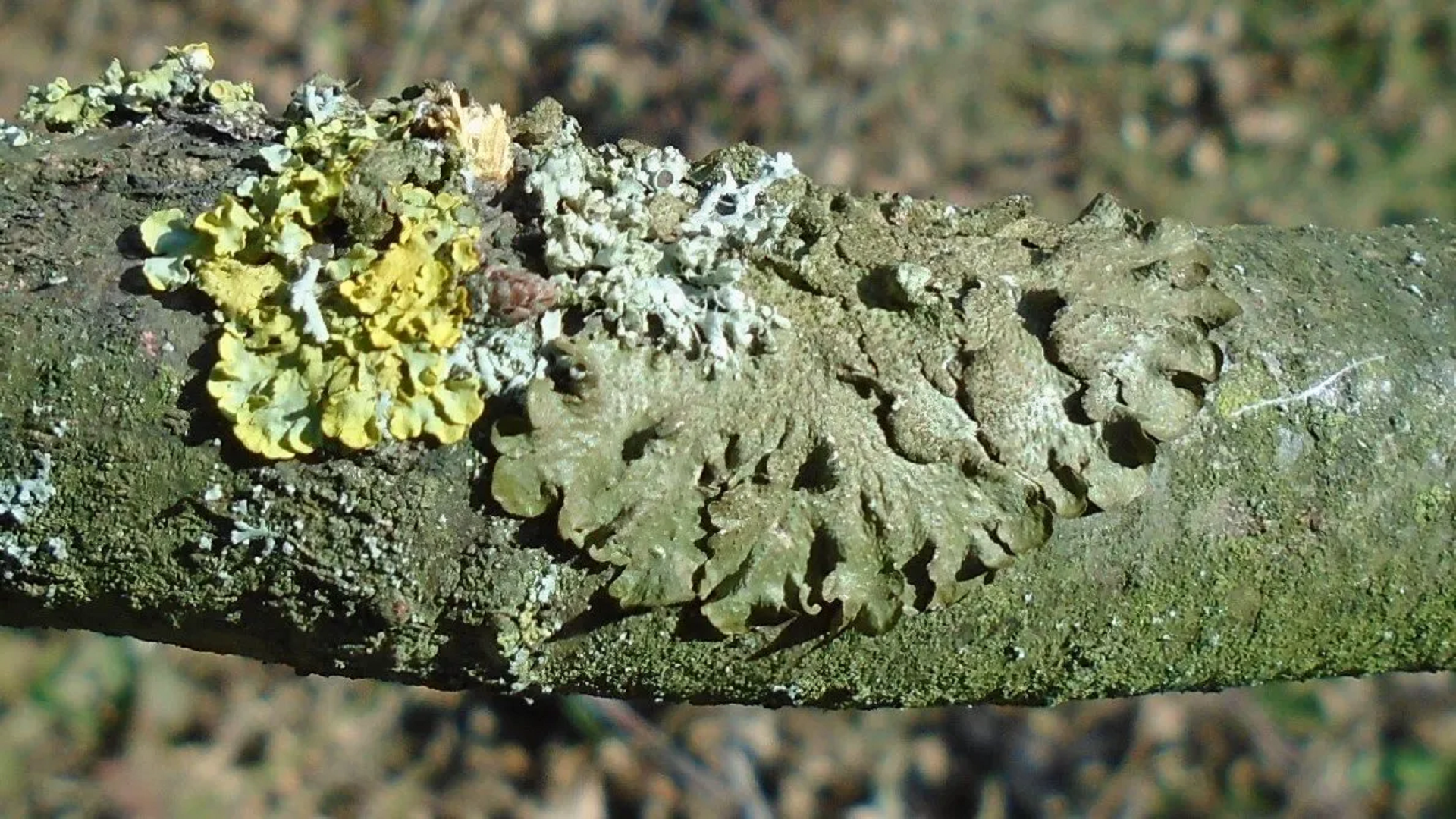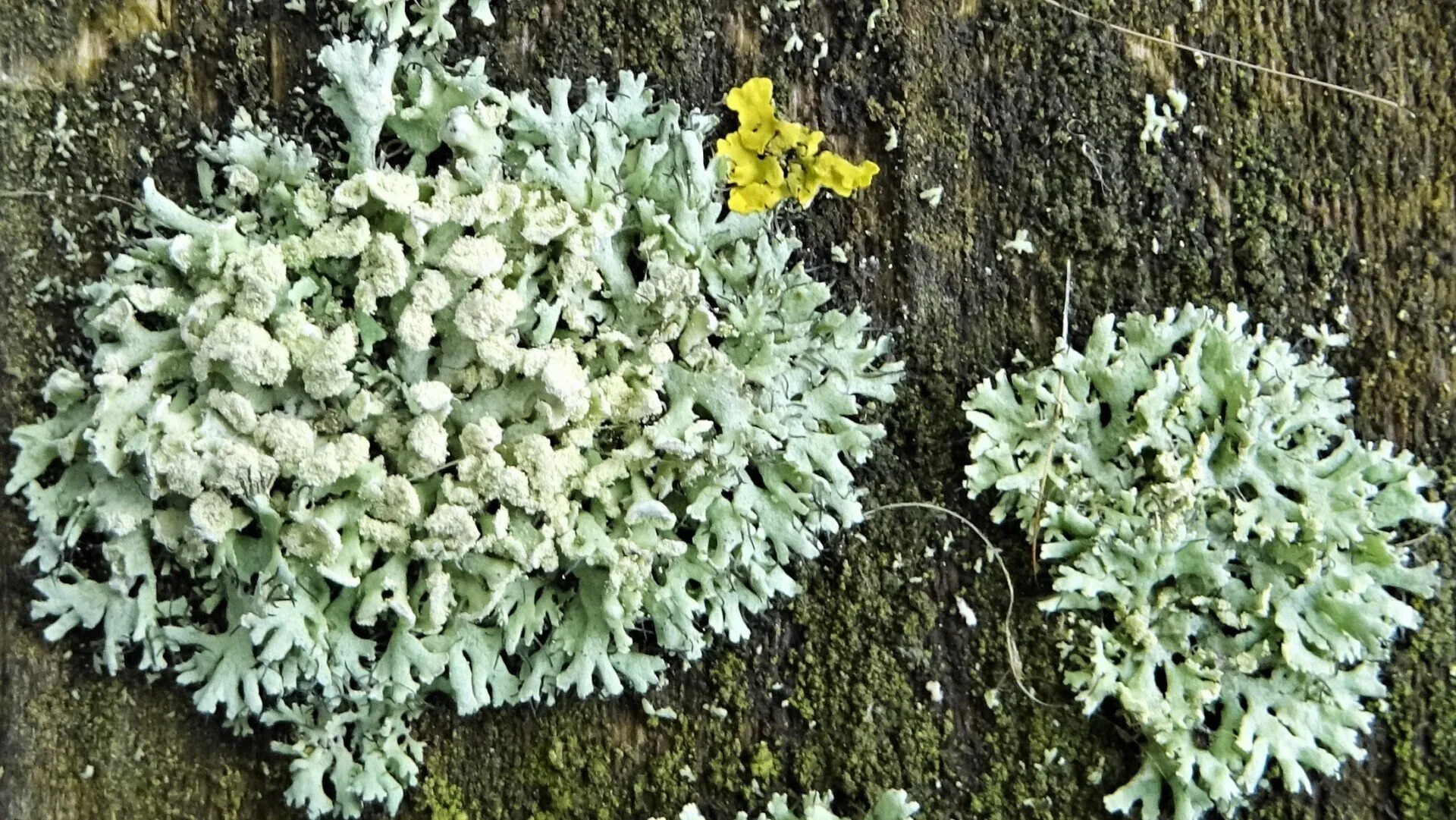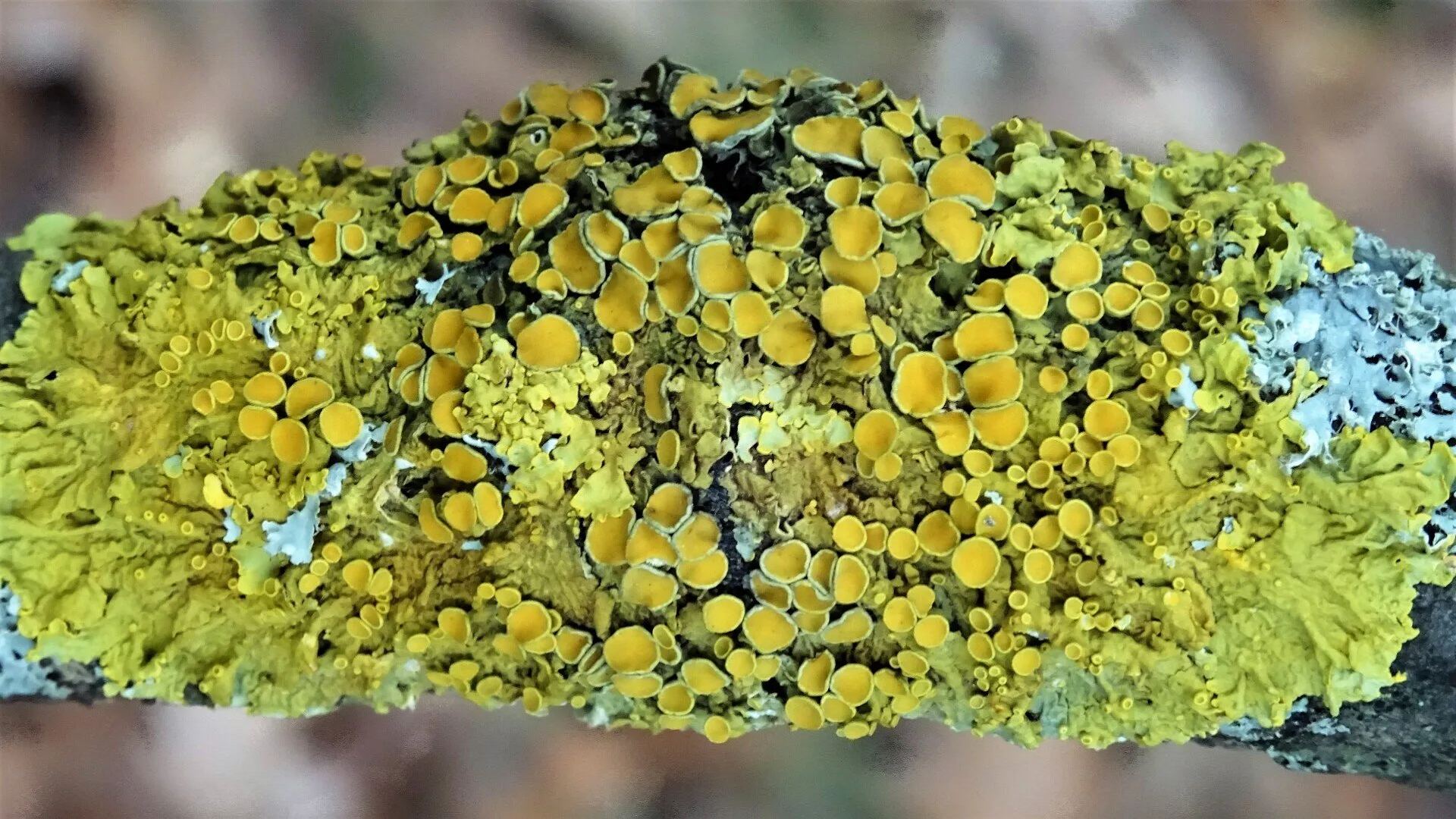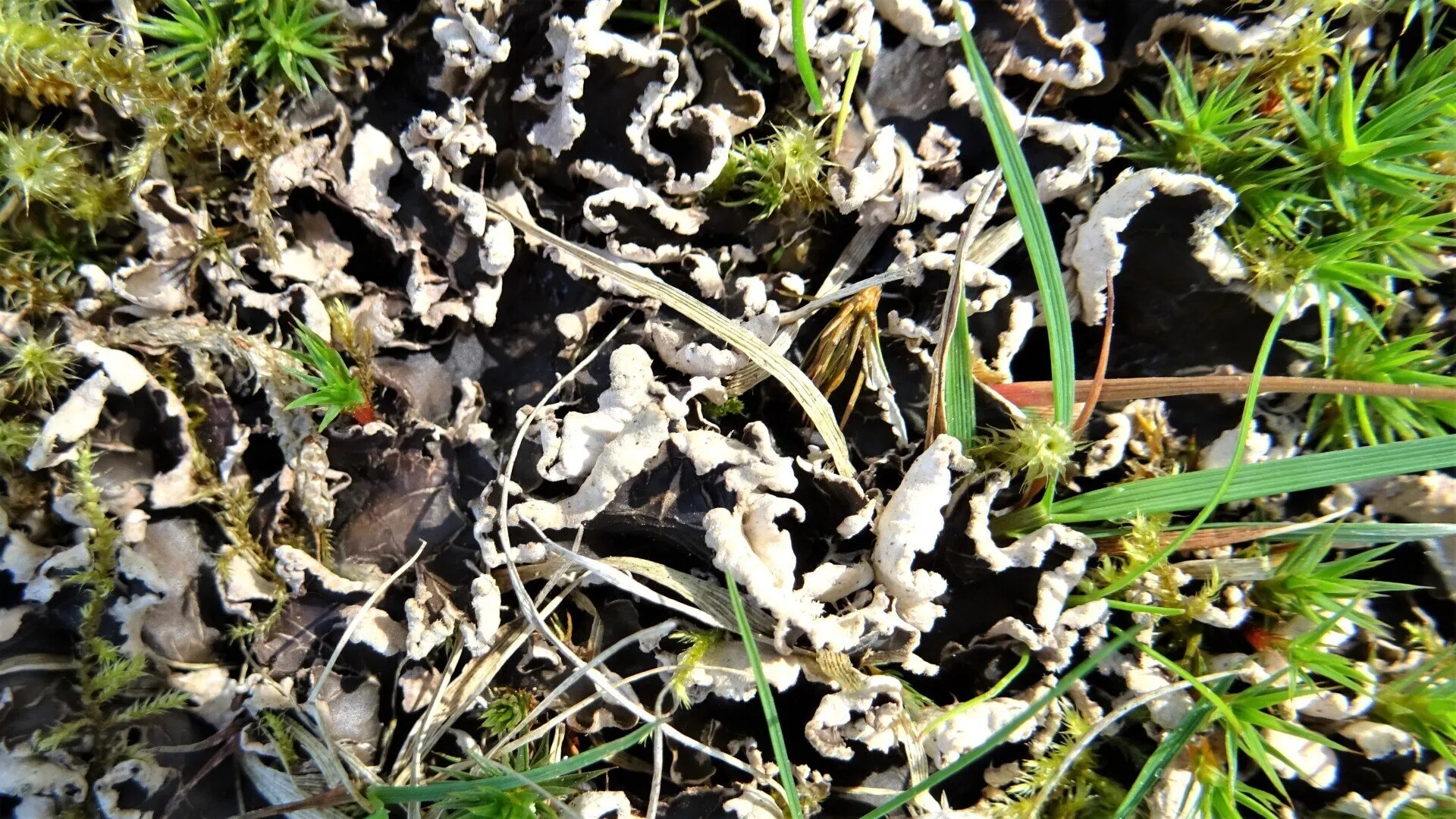FOLIOSE LICHENS
Foliose Lichens attach to surfaces by hyphae in the lower cortex using small root-like structures called rhizines.
Hypogymnia physodes
The smooth greyish-green lobes are flat to convex and dark brown or black underneath. There are no rhizines. The tips are frequently turned up. Common on acid-barked trees.
Parmelia perlata
On hawthorn. The lobe edges are covered in a fine dust. These microscopic structures are known as soredia.
Parmelia subaurifera An olive-green leafy lichen.
Parmelia subrudecta Has rounded lobes at the edge. Central lobes have soredia.
Physcia adscendens A common lichen found on twigs, bark and walls. The tiny brown roundish swellings on the lichen in centre of this picture is parasitic fungus Heterocephalacria physciacearum. Tips of lobes on Physcia adscendens are hooded. They split to reveal soredia. Physcia tenella and Physcia adscendens cover much of the hawthorn bushes and are easily visible before the leaves appear.
Physcia aipolia On hawthorn. Blue-grey lobes. Fruiting bodies black with blue-grey edge. Lichen width:13mm. Requires a low level of pollution.
Physcia tenella Often found on Hawthorn. 20mm width. The lobe tips split and fold back to reveal soredia. This was growing on a gate.
Xanthoria polycarpa Found on nutrient-enriched trees forming clusters on small twigs and branches.
Peltigera sp. Dog lichens are usually discovered amongst grasses and mosses. Identification is difficult but this is probably
Peltigera hymenina, the commonest Dog Lichen in Essex.
© hainaultforest.net. All rights reserved.


